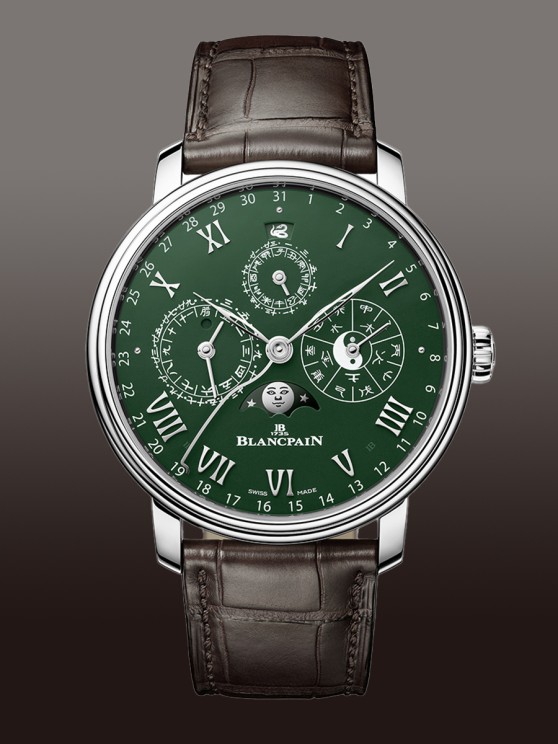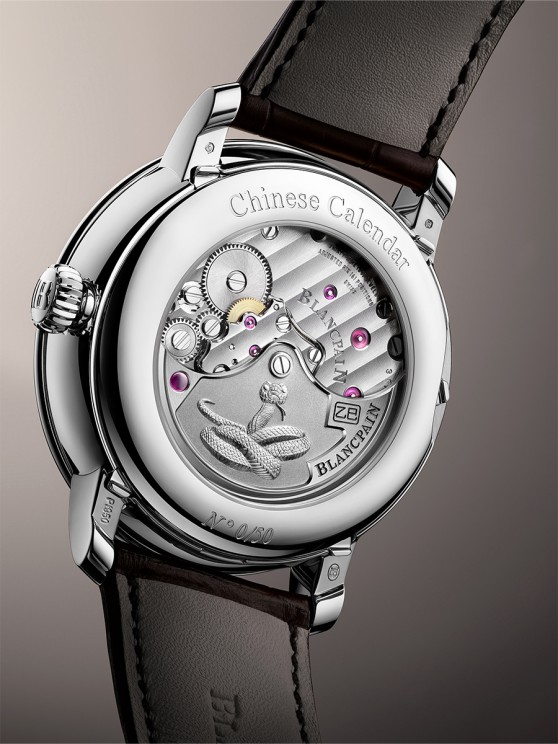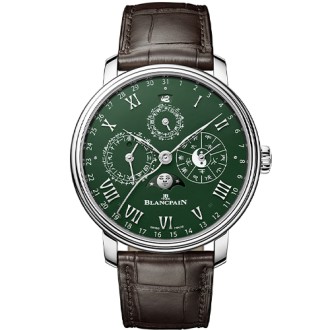Sensual and enigmatic, a symbol of wisdom or temptation but equally associated with intelligence and renewal, the snake’s power to enthral is embedded in multiple cultures and eras. On January 29th - the first day of the New Year in the Chinese calendar - the wood dragon will give way to the wood snake. The sixth animal in the Chinese zodiac, its silhouette will watch over the days and months until the next Chinese New Year begins on February 17th 2026. In celebration of this symbolic date, Blancpain presents a Villeret Traditional Chinese Calendar in a 50-piece limited edition.
This is the fourteenth consecutive year the Le Brassus brand has marked the event. The launch, in 2012, of the Villeret Traditional Chinese Calendar began a first 12-year cycle that continued with the introduction, each year, of a new model in honour of the reigning zodiac animal, in the order designated by the Jade Emperor. In 2024 Blancpain debuted a second 12-year cycle with a restyled portrait of the wood dragon; the mythical beast’s outline framed by an aperture at 12 o’clock. The honours now go to the wood snake whose stylised coils, highlighted in white, stand out against the deep green dial.

A novel combination
While the Chinese calendar has no secrets for Blancpain, this latest limited edition breaks new ground with a 42.5mm case sculpted from platinum, an unalterable precious metal, surrounding a green Grand Feu enamel dial. This unprecedented and supremely elegant combination forms an interesting contrast with the Chinese calendar indications and offers excellent legibility. Reproducing the intricacies of the Chinese calendar in a space as small as a watch dial is a challenge in itself. Unlike the Gregorian calendar, which is a solar calendar based on the position of the sun, the Chinese calendar is lunisolar, meaning it follows the cycles of the moon and the sun. In the Chinese calendar, years vary in length and the New Year falls between January and February, beginning on a New Moon. Also known as an agricultural calendar, it comprises 12 or 13 lunar months of 29 or 30 days. A thirteenth leap month is intercalated every three years.
Harmoniously arranged across the surface of the dial, the calendar indications are easily read despite their evident complexity. A subdial at 3 o’clock displays the five elements in Chinese astrology – metal, wood, water, fire and earth- associated with the ten heavenly stems plus Yin and Yang. Directly opposite, at 9 o’clock, Chinese days and months are shown by two hands sweeping a finely calligraphed subdial. Positioned inside this subdial is a small circular window for the leap-year indication. The current zodiac sign is displayed in an aperture at 12 o’clock above a subdial for traditional Chinese double hours, forming a pleasing symmetry with the Blancpain logo and its signature moon phases at 6 o’clock. Completing this array of information, the brand has included a serpentine hand which points to the date in the Gregorian calendar, inscribed around the edge of the dial.
Infinitely complex
Powering the Villeret Traditional Chinese Calendar is an understandably complex in-house movement, Calibre 3638, which Blancpain unveiled in 2012 for the first series of limited editions in honour of the Chinese New Year. Five years in development, 464 components, three barrels supplying an impressive seven-day power reserve… the numbers alone are testimony to the technical tour de force such a mechanism represents. Turning the watch over, the open caseback shows off the haute horlogerie movement finishing, in addition to a finely detailed engraving of a coiled snake on the frosted white gold rotor. Not to be overlooked: the under-lug correctors which Blancpain patented in 2005 enable adjustment of all the calendar indications on this limited edition at the touch of a finger, without any need for tools: simple, practical and with no risk of damaging the movement with untimely manipulations. All that remains is for the watch’s owner to take in the nuances and complexities of this lunisolar calendar, so very different from our Gregorian calendar.









